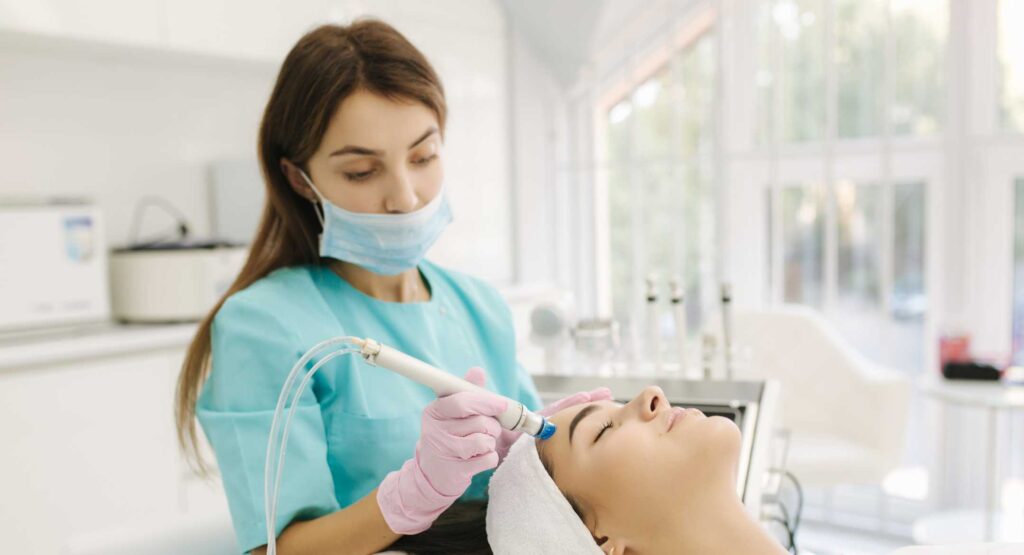Upon completing residency, a dermatologist looking to start their own practice might consider a large city as an optimal place to bring one’s expertise. A large city affords a bigger population of patients, more amenities and services, and the potential for niche specialization. However, small-to-mid-size communities also have many advantages.
Specialization
Many dermatology practices in large cities specialize in a niche. A niche within dermatology may work well for a select few, but it can also create a stalemate in your patient traffic and long-term growth. Having a specific niche may also mean dependance on referrals from colleagues who you must remind about your availability and specialization.
In comparison, a mid-size community allows you to practice a wide variety of treatments and procedures that fall under the specialty of dermatology. Even more, a small community may be totally dependent on the dermatologist doing everything within their specialty and beyond.
Having a diverse range within the specialty of dermatology can boost business, turn profits and allow for you to remain busy even during times of economic hardship. Staying general allows less need for referrals from colleagues.
Opportunity
Picking a smaller community that sits outside of a large city means you still have access to the features that the urban area provides but with easier new growth due to limited competition. Use New York City as an example. With no shortage of great dermatologists, the market is heavily saturated. This feature can make it more competitive to start a practice or find a job. Extending your job search to New York State, New Jersey and other surrounding states may broaden your options to thrive.
Small-to-mid-size communities offer the opportunity to corner the market. A small suburban community may not have a dermatology practice within the town itself, and a small, rural community may lack a dermatology practice for 200 miles. Such examples create a unique opportunity for you to start a practice with very little competition and a guarantee of growth.
Considering these different options requires research. Examples of ways to gather information include the following:
Suburban search: Establish a “travel radius” from the urban area that you would like to be nearby. Search dermatology practices within your travel time and rule out the communities that have one or more dermatologists. Consider contacting practices where the current dermatologist may be within 5-10 years of retiring. Look at job boards to see if there are locations that are searching for more dermatologists within the area as this may give you ideas about places you had not considered.
Medium sized markets: Look at growing communities and “best places to live” to narrow down the region of the country where you would like to live. Contact recruiters to get on the list of available locations that may be hiring. This does not necessarily mean you need to be hired but it is a no-cost way to learn about need in a community. Perform a search of dermatologists per capita for where you are considering.
Small and rural markets: This requires a search similar to what you would do for a medium-sized market, but you may also consider contacting state dermatology societies to see where there may be opportunities that you have not considered. They may know who is retiring or which communities are most in need.
For all of the above, it is recommended that you let everyone you have worked with know that you are looking for a job. The specialty of dermatology is incredibly well connected to each other. You may not realize that your favorite mentor grew up in a small town and may have insider info about somewhere you may not have considered, or they may know about a colleague retiring who is looking for a young partner.
Also look at general living perks like cost of real estate, insurance, taxes and other business-related matters. Consider researching hiring and firing laws, and the rights of mid-level providers in the state you are considering as this may give information for future growth should you need helper employees.
Relationships
A smaller community allows you to become more acquainted with local referring providers. This means that when a patient needs dermatology care after a primary care visit, the physician might steer them toward your practice. Referral relationships are often lost in a large city where referring providers not only have hundreds of options to choose from, but also might refer patients to a practice that they are already familiar with.
Becoming available with referring providers is a way to grow fast. Provide your colleagues with your cell phone number and let them know they can contact you whenever they need to get a patient in. Make sure your scheduling team knows to allow referrals in swiftly as well. These easy steps build your reputation as being helpful and relatable. In addition to referrals from your colleagues, the patients seen on short notice will pass their appreciation to family members and loved ones, and thus generate additional word-of-mouth growth. Colleague referrals are a 2-way relationship: you will also be able to get your patients in to see your colleagues when they need it.
Summary
Be open minded to explore employment opportunities in different sized communities. Starting a practice in smaller and mid-size communities comes with many benefits. Doing so can allow you to grow quickly, be productive indefinitely, and build collegial relationships. Plus, small-medium sized cities are often very desirable places to live.
Author
-

Dr. Kate Zibilich Holcomb is a board-certified dermatologist and owner of Pure Dermatology in New Orleans, La., which she founded in 2017. She is an assistant clinical professor at Tulane University School of Medicine where she supervises the dermatology and plastic surgery residents bi-monthly in their respective cosmetic injectable clinics. She is trainer for both Galderma and Allergan and has a clinical research division in her private clinic. Dr. Holcomb completed her residency at Saint Luke’s Roosevelt Hospital of Mount Sinai in New York City where she received the American Society of Dermatologic Surgery Resident Scholarship two years in a row and the American Academy of Dermatology Travel Grant to Scotland. She was elected chief resident in her third year. She served in the U.S. Navy as a recipient of the Health Professions Scholarship Program, training dermatology residents, and completing her service in 2012. Dr. Holcomb returned to New Orleans in 2012, first working in private practice before starting her own. She is a member of the American Academy of Dermatology, American Society of Dermatologic Surgeons, American Society for Laser Medicine and Surgery, American Acne and Rosacea Society, Skin of Color Society, North American Contact Dermatitis Society, Louisiana Dermatological Society and Women’s Dermatologic Society for which she has served on a number of committees. She enjoys traveling and cooking with her husband, Mark, and her two sons, Paul and Christopher.
View all posts

